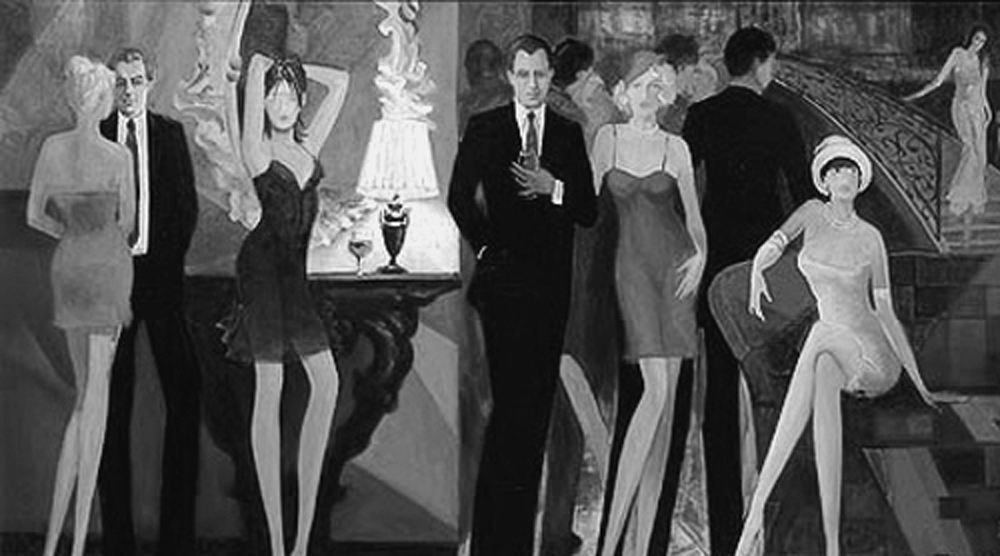Cosmetics, Fashions, and the Exploitation of Women by Joseph Hansen, Evelyn Reed and Mary-Alice Waters is one of Pathfinder’s Books of the Month for March. This Marxist classic on women’s emancipation began as a 1954 debate in the Militant over the relation of big-business marketing of cosmetics and fashions to the oppression of women. The excerpt is from the chapter “The Woman Question and the Marxist Method” by Evelyn Reed, a leader of the Socialist Workers Party. She joined the second wave of the fight for women’s liberation in the 1960s and ’70s, authoring several books on the origins of women’s oppression. Copyright © 1986 by Pathfinder Press. Reprinted by permission.
BY EVELYN REED
The class distinctions between women transcend their sex identity as women. This is above all true in modern capitalist society, the epoch of the sharpest polarization of class forces.
The woman question cannot be divorced from the class question. Any confusion on this score can only lead to erroneous conclusions and setbacks. It will divert the class struggle into a sex struggle of all women against all men.
Historically, the sex struggle was part of the bourgeois feminist movement of the last century. It was a reform movement, conducted within the framework of the capitalist system, and not seeking to overthrow it. But it was a progressive struggle in that women revolted against almost total male domination on the economic, social, and domestic fronts. Through the feminist movement, a number of important reforms were won for women. But the bourgeois feminist movement has run its course, achieved its limited aims, and the problems of today can only be resolved in the struggle of class against class.
The woman question can only be resolved through the lineup of working men and women against the ruling men and women. This means that the interests of the workers as a class are identical; and not the interests of all women as a sex.
Ruling-class women have exactly the same interest in upholding and perpetuating capitalist society as their men have. The bourgeois feminists fought, among other things, for the right of women as well as men to hold property in their own name. They won this right. Today, plutocratic women hold fabulous wealth in their own names. They are completely in alliance with the plutocratic men to perpetuate the capitalist system. They are not in alliance with the working women, whose needs can only be served through the abolition of capitalism. Thus, the emancipation of working women will not be achieved in alliance with women of the enemy class, but just the opposite; in a struggle against them as part and parcel of the whole class struggle.
The attempt to identify the interests of all classes of women as a sex takes one of its most insidious forms in the field of female beauty. The bourgeois myth has arisen that since all women want to be beautiful, they all have the same interest in cosmetics and fashions which are currently identified with beauty. To buttress this myth, it is claimed that fashion beauty has prevailed throughout all ages of history and for all classes of women. As evidence, they point to the fact that even in primitive society, women painted and decorated their bodies. To explode this myth, let us briefly examine the history of cosmetics and fashions.
In primitive society, where there were no classes, no economic and social competition, and no sexual competition, the bodies of both women and men were painted and “decorated,” and it was not for the sake of beauty. It was a necessity that arose out of certain primeval and primitive conditions of labor, which I shall explain in detail in future articles.
It was necessary at that time for each individual who belonged to the kinship group to be “marked” as such. These “marks” were not merely ornaments, rings, bracelets, short skirts, etc., but actual gashes, incisions, tattoo marks, etc. as well as different kinds of painting. These marks indicated not only the sex of each individual but the changing age and labor status of each individual as he matured from a child to an elder.
These marks identified the kindred members of the same group or labor collective. Since primitive society was socialist, these marks also expressed social equality. …
Then came class society. The marks that signified, among other things, social equality under primitive socialism, became transformed into their opposite. They became fashions and decorations that signified social inequality: the division of society into rich and poor, into rulers and subjugated. Cosmetics and fashions became the marks of social distinction between the classes and the apex of this social distinction is found in the French Court before the French Revolution. …
But as capitalism developed, there arose an enormous expansion of the productive machine and with it the need for a mass market. Since women represent half the population, profiteers in “beauty” eyed this mass and lusted to exploit it for their own purposes. …
The fashion world became a capitalist gold mine with virtually unlimited possibilities. All a big businessman had to do was to change the fashions often enough and invent enough new aids to beauty and he could become richer and richer. That is how, under capitalism, the sale of women as commodities was displaced by the sale of commodities to women. Correspondingly, natural beauty became more and more displaced by artificial beauty; namely, fashion beauty. And that is how the myth arose that beauty is identical with fashion. …
Beauty has no identity with fashions. But it has an identity with labor. Apart from the realm of nature, all that is beautiful has been produced in labor and by the laborers. Outside the realm of nature, beauty does not exist apart from labor and never will. For the beauty of all the products of labor, and of all the arts produced in and through labor, are incorporated within these products and these arts.
Humanity itself, together with the beauty of humanity, was produced in and through the labor process. As [Frederick] Engels pointed out, when the humans produced, they produced themselves as humans. They cast off their apelike appearance and became more and more beautiful. When the capitalist social disfigurement of exploited labor is removed, the true beauty of labor and of the laborers will stand forth in their true dimensions.



